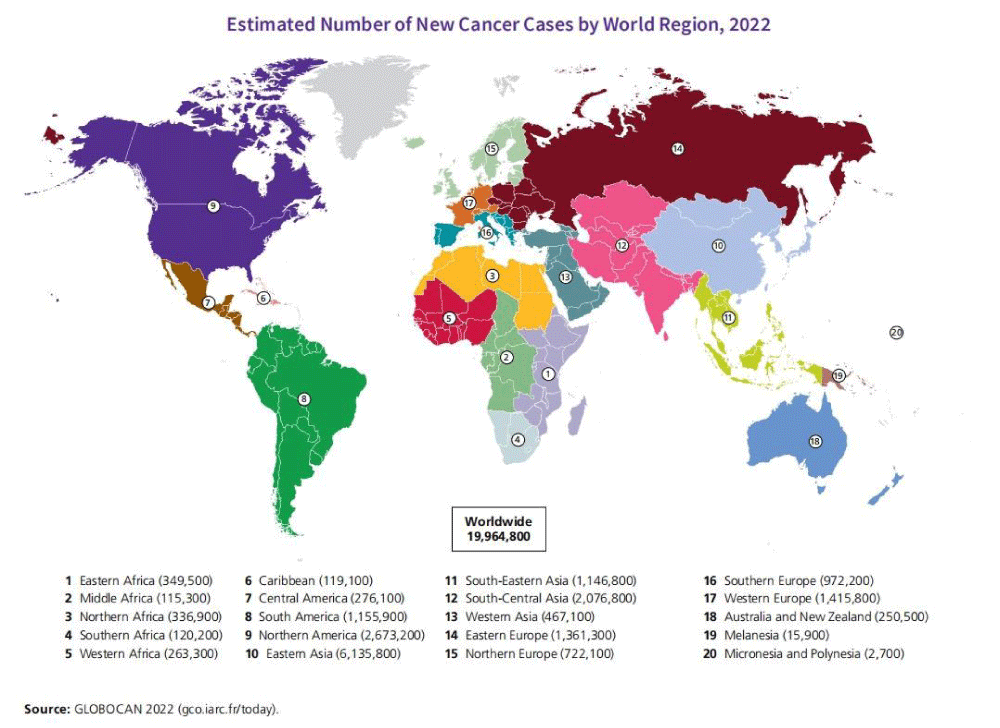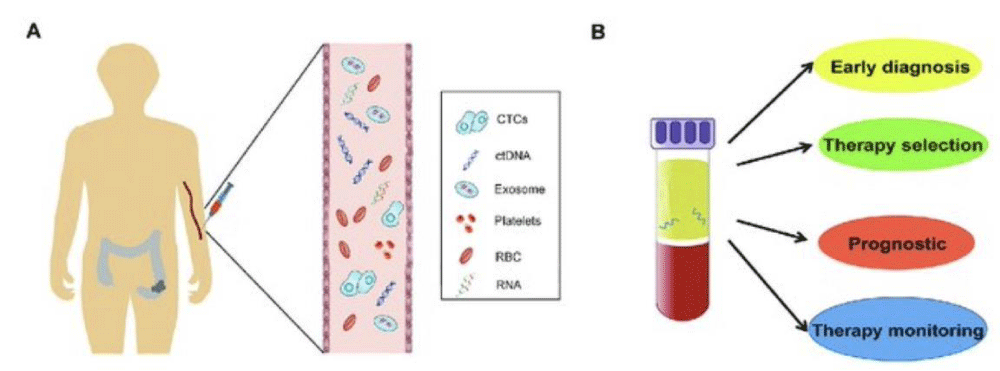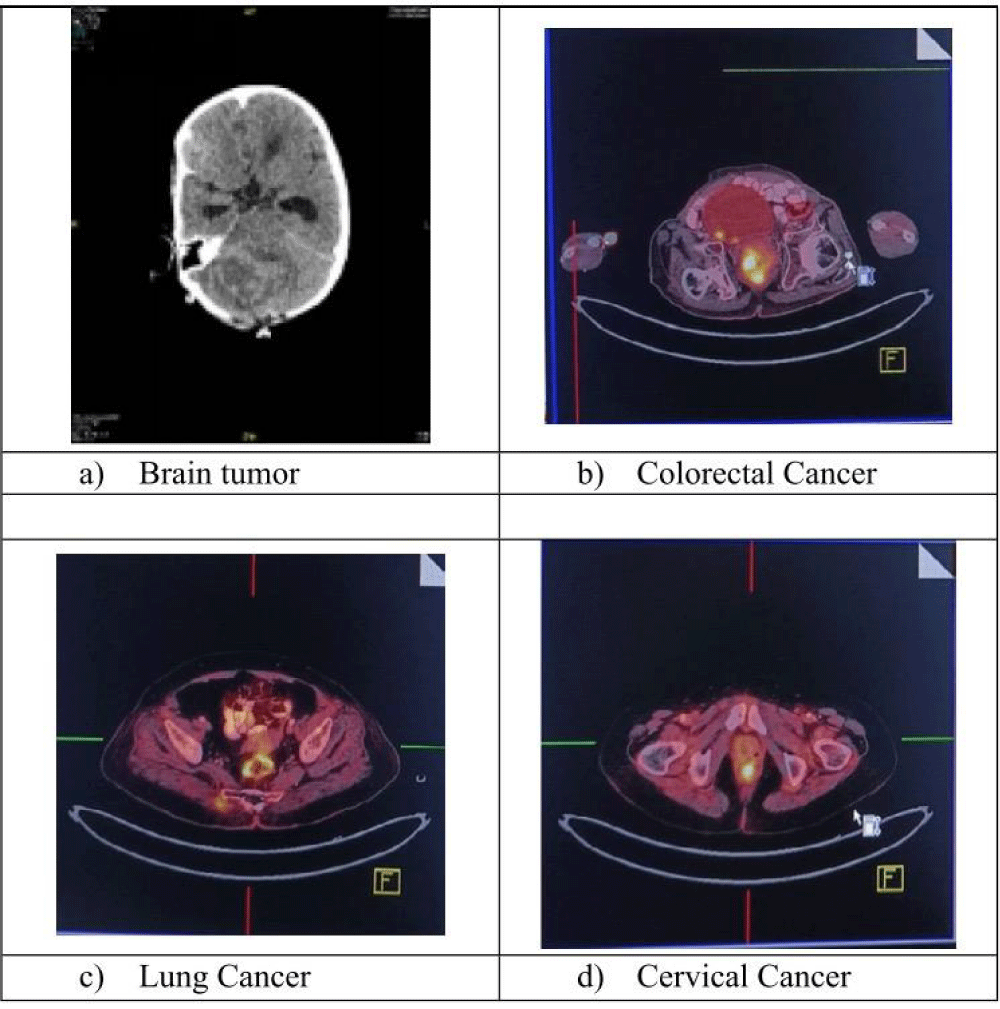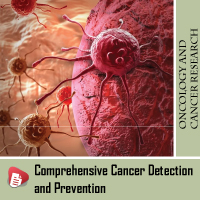Comprehensive Cancer Detection and Prevention
Next-generation Cancer Screening and Prevention: The Convergence of Liquid Biopsy Diagnostics, Artificial Intelligence and Precision Medicine
Sakarie Mustafe Hidig1,2* and Fidele Kakule Kitaghenda3
1Division of Hepatobiliary and Pancreatic Surgery, Department of Surgery, The Fourth Affiliated Hospital of School of Medicine, and International School of Medicine, International Institutes of Medicine, Zhejiang University, Yiwu, Zhejiang, 322000, China
2Editor-in-Chief, Research Center, Hargeisa Group Hospital, Hargeisa City, Somalia
3Department of Gastrointestinal Surgery, The Affiliated Hospital of Xuzhou Medical University, Xuzhou, Jiangsu, 221002, People’s Republic of China
Cite this as
Hidig SM, Kitaghenda FK. Next-generation Cancer Screening and Prevention: The Convergence of Liquid Biopsy Diagnostics, Artificial Intelligence and Precision Medicine. Compr Cancer Detect Prev. 2025;1(1): 001-005. Available from: 10.17352/ccdp.000001Copyright Licence
© 2025 Hidig SM, et al. This is an open-access article distributed under the terms of the Creative Commons Attribution License, which permits unrestricted use, distribution, and reproduction in any medium, provided the original author and source are credited.Cancer remains a leading cause of mortality worldwide, necessitating advancements in early detection and prevention strategies. This mini-review explores current approaches in comprehensive cancer detection, including liquid biopsies, imaging technologies, and biomarker-based screening. Additionally, we discuss preventive measures such as lifestyle modifications, vaccination, and chemoprevention. Emerging technologies like artificial intelligence (AI) and multi-omics profiling are revolutionising personalised cancer care. Despite progress, challenges such as accessibility, cost, and false-positive rates persist. This review synthesises recent findings from PubMed-indexed studies to provide an updated perspective on cancer detection and prevention strategies.
Abbreviation
AI: Artificial Intelligence; CA: Cancer Antigen; cfDNA: Cell-free DNA; CTC: Circulating Tumor Cell; ctDNA: Circulating Tumor DNA; dMMR: Mismatch Repair Deficiency; EBV: Epstein-Barr Virus; EMR: Electronic Medical Record; FDA: Food and Drug Administration; FFPE: Formalin-Fixed Paraffin-Embedded
Introduction
Cancer is a complex and heterogeneous disease responsible for nearly 10 million deaths annually [1]. Early detection and prevention are critical to reducing cancer-related morbidity and mortality. The World Health Organisation (WHO) emphasises that up to 30% – 50% of cancers can be prevented by addressing risk factors such as smoking, poor diet, and lack of physical activity (WHO 2020). Advances in genomics, imaging, and molecular diagnostics have enhanced our ability to identify cancer at precancerous or early stages, improving survival rates [2]. The integration of multi-omics approaches, including genomics, proteomics, and metabolomics, has provided deeper insights into cancer biology, enabling the development of targeted therapies and personalised screening protocols [3]. Additionally, the rise of AI and machine learning in oncology has improved diagnostic accuracy and risk prediction models [4]. This review highlights recent developments in cancer detection technologies and evidence-based prevention strategies, emphasising the need for equitable implementation to reduce global cancer disparities (Figure 1).
Current strategies in cancer detection
Imaging-based detection
Imaging techniques such as mammography, Computed Tomography (CT), and Magnetic Resonance Imaging (MRI) remain foundational tools in cancer screening and diagnosis. Low-dose CT (LDCT) has demonstrated a 24% reduction in lung cancer mortality and a 20% reduction in all-cause mortality among high-risk smokers, as shown in the NELSON trial and confirmed by subsequent meta-analyses [5]. In prostate cancer, multiparametric MRI (mpMRI) has improved diagnostic precision by increasing detection of clinically significant tumors while reducing unnecessary biopsies by up to 28%, according to the PRECISION trial [6]. Emerging modalities, such as PET-MRI, offer enhanced soft tissue characterisation and functional imaging in a single session, which is particularly promising for staging cancers like prostate and head-and-neck malignancies. Contrast-enhanced Ultrasound (CEUS) is gaining traction in liver and breast cancer evaluation due to its low cost and safety profile, especially in patients contraindicated for iodinated or gadolinium-based contrast agents.
Despite these advances, barriers remain, particularly in low- and middle-income countries due to limited access, infrastructure challenges, and high operational costs. Radiation exposure is also a concern, particularly with repeated CT scans. To address these limitations, AI-powered image analysis tools are being integrated into diagnostic workflows to improve accuracy, reduce interpretation variability, and optimise workflow efficiency. Deep learning algorithms, trained on tens of thousands of annotated images, are now achieving diagnostic accuracy comparable to expert radiologists in tasks such as mammogram interpretation and lung nodule classification [7].
Liquid biopsies and circulating biomarkers
Liquid biopsies, which detect circulating tumor DNA (ctDNA), Circulating Tumor Cells (CTCs), and exosomes, offer a non-invasive approach to cancer monitoring [8]. These methods are particularly valuable for detecting Minimal Residual Disease (MRD) and monitoring treatment response in real time [8]. For example, ctDNA analysis has been successfully used to track mutations in colorectal and breast cancers, guiding precision therapy adjustments. Despite their promise, challenges such as low tumor DNA fraction in blood, technical variability, and high costs remain barriers to widespread clinical implementation [9]. Ongoing research focuses on improving sensitivity through novel sequencing techniques and integrating multi-analyte approaches (e.g., combining ctDNA with protein biomarkers) [10] (Figures 2,3).
Cancer prevention strategies
Lifestyle modifications
Lifestyle factors play a significant role in cancer prevention, with research suggesting that up to 40% of cancers could be avoided through behavioural changes [11]. Tobacco use remains the leading preventable cause of cancer, contributing to malignancies of the lung, bladder, and pancreas [12]. Public health initiatives promoting smoking cessation, such as taxation and public smoking bans, have demonstrated success in reducing cancer incidence over time. Additionally, dietary modifications, including increased consumption of fruits, vegetables, and whole grains, have been associated with a lower risk of colorectal and gastric cancers [13].
Physical inactivity and obesity are also major contributors to cancer development, particularly for breast, colon, and endometrial cancers [14]. Regular exercise has been shown to reduce systemic inflammation and insulin resistance, both of which are linked to tumor progression. Public health campaigns encouraging weight management and physical activity, alongside policies promoting healthier food environments, are essential for reducing the global cancer burden. Further research is needed to optimise personalised lifestyle interventions based on genetic and metabolic profiles.
Vaccination and chemoprevention
Vaccination has emerged as a powerful tool in preventing virus-associated cancers. The Human Papillomavirus (HPV) vaccine has significantly reduced the incidence of cervical, oropharyngeal, and anal cancers, with studies showing near-elimination of HPV-related precancerous lesions in vaccinated populations [15]. Similarly, the hepatitis B vaccine has contributed to a marked decline in liver cancer rates in endemic regions. Global efforts to expand vaccination coverage, particularly in low- and middle-income countries, remain critical for cancer prevention. Chemoprevention strategies have also shown promise in high-risk populations. Selective oestrogen Receptor Modulators (SERMs) like tamoxifen reduce breast cancer incidence by up to 50% in women with elevated risk [16]. Aspirin, through its anti-inflammatory effects, has been associated with a reduced risk of colorectal cancer, though its long-term use must be balanced against bleeding risks. Future research should focus on identifying biomarkers to better stratify individuals who would benefit most from these interventions while minimizing side effects.
Challenges and future directions
Barriers to implementation
Despite advancements in cancer detection and prevention, significant challenges hinder widespread adoption. False positives in screening programs, such as mammography and PSA testing, can lead to unnecessary biopsies, overtreatment, and patient anxiety [17]. Additionally, disparities in access to early detection technologies persist, with marginalised populations and low-income countries facing limited availability of advanced diagnostics [18]. Addressing these inequities requires policy reforms, increased funding for global health initiatives, and the development of low-cost screening tools. The high cost of emerging technologies, such as liquid biopsies and Multi-cancer Early Detection (MCED) tests, further limits their accessibility [19]. While these innovations hold promise for improving outcomes, their cost-effectiveness must be rigorously evaluated to justify widespread implementation. Collaborative efforts between governments, healthcare systems, and private sectors are needed to ensure that breakthroughs in cancer care benefit all populations, not just those in high-resource settings.
Emerging technologies and research priorities
The integration of Artificial Intelligence (AI) into oncology holds immense potential for refining early detection and risk stratification. Machine learning algorithms can analyse vast datasets from imaging, genomics, and electronic health records to identify high-risk individuals with greater precision [19]. However, challenges such as algorithmic bias, data privacy concerns, and the need for large-scale validation studies must be addressed before AI-driven tools can be widely adopted in clinical practice. Future research should also prioritise multi-omics approaches that combine genomic, proteomic, and metabolomic data to uncover novel biomarkers for early cancer detection [20]. Additionally, expanding global screening programs, particularly for cancers with high mortality rates, such as liver and gastric cancers, will require innovative strategies tailored to low-resource settings. Collaborative international research initiatives and public-private partnerships will be essential for translating scientific discoveries into real-world impact.
Discussion
Recent advancements in cancer detection have demonstrated significant improvements in early diagnosis and patient outcomes. Liquid biopsies, particularly those analysing circulating tumour DNA (ctDNA), have shown promising sensitivity in detecting certain cancer types at early stages. For example, a detection sensitivity exceeding 90% has been reported in specific studies for cancers such as advanced-stage lung and colorectal cancer, though sensitivity remains lower for others like early-stage pancreatic or ovarian cancer [8]. Imaging technologies, such as low-dose CT for lung cancer screening, have reduced mortality by 20% in high-risk populations. Recent advances in AI-assisted diagnostics, particularly those using deep learning algorithms such as Convolutional Neural Networks (CNNs), have improved the accuracy of mammography interpretation and digital pathology slide analysis. These models are typically trained on large datasets, often comprising tens of thousands of annotated images, to ensure robust performance. Reported improvements in diagnostic accuracy include increases in sensitivity and reductions in false positives, although model performance can vary depending on data quality and external validation [19]. Multi-cancer Early Detection (MCED) tests, though still under investigation, have shown promise in identifying tumours with no standard screening options, potentially revolutionising population-level cancer screening [21].
In prevention, large-scale studies have confirmed the efficacy of lifestyle modifications. For instance, comprehensive smoking cessation programs, including pharmacologic and behavioural strategies, have reduced lung cancer incidence by up to 30% in high-risk populations over 5–10 years [22]. HPV vaccination has led to a dramatic decline in cervical precancerous lesions, particularly when administered before the onset of sexual activity. The vaccine is most effective when given between the ages of 9 and 14, with diminished effectiveness in older adolescents and adults. In well-vaccinated cohorts of this younger age group, near elimination of high-grade cervical lesions has been observed [23]. Chemoprevention strategies, such as daily low-dose aspirin (100 mg) for Lynch syndrome patients and tamoxifen in women with a ≥ 1.7% 5-year risk of breast cancer (as per the Gail Model), have shown significant risk reductions in large trials like CAPP2 and IBIS-I, though identifying optimal candidates remains a challenge [24]. These findings underscore the importance of combining early detection with primary prevention for maximal impact on cancer burden. Despite these advances, several challenges persist. False-positive rates in screening programs remain problematic, leading to unnecessary procedures and patient anxiety. Health disparities in access to these technologies are stark, with low-income populations and developing nations having significantly lower screening uptake [25]. Additionally, the high cost of novel detection methods limits their widespread implementation, highlighting the need for cost-effectiveness analyses and innovative financing models [26]. Future research must address these barriers while continuing to refine detection technologies and expand evidence-based prevention strategies to diverse populations worldwide.
Conclusion
Comprehensive cancer detection and prevention require a multifaceted approach that integrates cutting-edge technologies, evidence-based interventions, and equitable healthcare policies. Advances in liquid biopsies, AI-driven diagnostics, and vaccination programs have transformed the landscape of oncology, offering new hope for early intervention and improved survival rates. However, challenges such as accessibility, cost, and the need for personalised risk assessment remain critical barriers to overcome. Moving forward, a concerted global effort is needed to ensure that innovations in cancer care reach underserved populations. By prioritising research, fostering international collaboration, and implementing targeted public health strategies, we can reduce the global burden of cancer and move closer to a future where early detection and prevention are universally accessible. Continued investment in science and healthcare infrastructure will be paramount to achieving these goals.
Author contribution
Dr. Sakarie Mustafe Hidig: Writing the original draft, validation, project administration, methodology, investigation, formal analysis, data curation, conceptualisation. Dr.Fidele Kakule Kitaghenda: Writing, review & editing, supervision.
- Sung H, Ferlay J, Siegel RL, Laversanne M, Soerjomataram I, Jemal A, et al. Global Cancer Statistics 2020: GLOBOCAN Estimates of Incidence and Mortality Worldwide for 36 Cancers in 185 Countries. CA: A Cancer Journal for Clinicians. 2021;71(3):209-49. Available from: https://doi.org/10.3322/caac.21660
- Crosby D, Bhatia S, Brindle KM, Coussens LM, Dive C, Emberton M, et al. Early Detection of Cancer: A Strategic Priority for Global Health. Lancet Oncol. 2022;23(1):e34-e43.
- Ahmed HU, El-Shater Bosaily A, Brown LC, Gabe R, Kaplan R, Parmar MK, et al. Diagnostic Accuracy of Multi-Parametric MRI and TRUS Biopsy in Prostate Cancer (PROMIS): A Paired Validating Confirmatory Study. Lancet. 2017;389(10071):815-22. Available from: https://doi.org/10.1016/s0140-6736(16)32401-1
- Hidig SM, Li H, Zhu X, Shao Y. Safety of Open Surgery and Total Endoscopic Anastomosis Assisted Radical Resection of Colorectal Cancer (CRC). Clin Med. 2023;4(3):78-85. Available from: http://dx.doi.org/10.23977/medsc.2023.040310
- de Koning HJ, van der Aalst CM, de Jong PA, Scholten ET, Nackaerts K, Heuvelmans MA, et al. Reduced Lung-Cancer Mortality with Volume CT Screening in a Randomized Trial. N Engl J Med. 2020;382(6):503-13. Available from: https://doi.org/10.1056/nejmoa1911793
- Hidig SM. High Hepatocellular Carcinoma Rates in African Nations: Challenges and Possibilities. IJRRIS. 2024;11(1):28-9. Available from: http://dx.doi.org/10.5281/zenodo.10799782
- Chaudhuri AA, Chabon JJ, Lovejoy AF, Newman AM, Stehr H, Azad TD, et al. Early Detection of Molecular Residual Disease in Localized Lung Cancer by Circulating Tumor DNA Profiling. Cancer Discov. 2017;7(12):1394-403. Available from: https://doi.org/10.1158/2159-8290.cd-17-0716
- Cohen JD, Li L, Wang Y, Thoburn C, Afsari B, Danilova L, et al. Detection and Localization of Surgically Resectable Cancers with a Multi-Analyte Blood Test. Science. 2018;359(6378):926-30. Available from: https://doi.org/10.1126/science.aar3247
- Zhang Y, Xu W, Peng C, Ren S, Hidig SM, Zhang C. Exploring the role of m7G modification in Cancer: Mechanisms, regulatory proteins, and biomarker potential. Cell Signal. 2024;111288. Available from: https://doi.org/10.1016/j.cellsig.2024.111288
- Hidig SM. Enhancing Cancer Screening Awareness in Diabetic and Non-Diabetic Populations. Konuralp Med J. 2024;16(2):214-6. Available from: https://doi.org/10.18521/ktd.1483790
- Hidig SM, Samatar H, Kitaghenda FK, Mohamed MA. Advancements in MRI radiomics for hepatocellular carcinoma: a narrative review. J Res Appl Basic Med Sci. 2025;11(1):19-31. Available from: http://dx.doi.org/10.61186/rabms.11.1.19
- Colditz GA, Bohlke K. Priorities for the primary prevention of breast cancer. CA Cancer J Clin. 2014;64(3):186-94. Available from: https://doi.org/10.3322/caac.21225
- Schwingshackl L, Chaimani A, Hoffmann G, Schwedhelm C, Boeing H. A network meta-analysis on the comparative efficacy of different dietary approaches on glycaemic control in patients with type 2 diabetes mellitus. Eur J Epidemiol. 2018;33:157-70. Available from: https://doi.org/10.1007/s10654-017-0352-x
- McTiernan A, Friedenreich CM, Katzmarzyk PT, Powell KE, Macko R, Buchner D, et al. Physical activity in cancer prevention and survival: a systematic review. Med Sci Sports Exerc. 2019;51(6):1252-61. Available from: https://doi.org/10.1249/mss.0000000000001937
- Arbyn M, Xu L, Simoens C, Martin-Hirsch PP. Prophylactic vaccination against human papillomaviruses to prevent cervical cancer and its precursors. Lancet. 2020;395(10224):575-90.
- Fisher B, Costantino JP, Wickerham DL, Cecchini RS, Cronin WM, Robidoux A, et al. Tamoxifen for the prevention of breast cancer: Current status of the National Surgical Adjuvant Breast and Bowel Project P-1 study. J Natl Cancer Inst. 2005;97(22):1652-62. Available from: https://doi.org/10.1093/jnci/dji372
- Esserman LJ, Thompson IM, Reid B, Nelson P, Ransohoff DF, Welch HG, et al. Addressing overdiagnosis and overtreatment in cancer: A prescription for change. JAMA. 2014;312(11):1093-4.
- Yabroff KR, Gansler T, Wender RC, Cullen KJ, Brawley OW. Minimizing the burden of cancer in the United States: Goals for a high-performing health care system. J Clin Oncol. 2020;38(29):3321-8.
- McKinney SM, Sieniek M, Godbole V, Godwin J, Antropova N, Ashrafian H, Shetty S. International evaluation of an AI system for breast cancer screening. Nature. 2020;577(7788):89-94. Available from: https://www.nature.com/articles/s41586-019-1799-6
- Hasin Y, Seldin M, Lusis A. Multi-omics approaches to disease. Genome Biol. 2017;18(1):83. Available from: https://doi.org/10.1186/s13059-017-1215-1
- Lennon AM, Buchanan AH, Kinde I, Warren A, Honushefsky A, Cohain AT, et al. Feasibility of blood testing combined with PET-CT to screen for cancer and guide intervention. Science. 2020;369(6499):eabb9601. Available from: https://doi.org/10.1126/science.abb9601
- Kuderer NM, Choueiri TK, Shah DP, Shyr Y, Rubinstein SM, Rivera DR, et al. Clinical impact of COVID-19 on patients with cancer (CCC19): a cohort study. Lancet. 2020;395(10241):1907-18. Available from: https://doi.org/10.1016/s0140-6736(20)31187-9
- Arbyn M, Weiderpass E, Bruni L, de Sanjosé S, Saraiya M, Ferlay J, et al. Estimates of incidence and mortality of cervical cancer in 2018: a worldwide analysis. Lancet Glob Health. 2020;8(2):e191-e203. Available from: https://doi.org/10.1016/S2214-109X(19)30482-6
- Rothwell PM, Price JF, Fowkes FGR, Zanchetti A, Roncaglioni MC, Tognoni G, et al. Short-term effects of daily aspirin on cancer incidence, mortality, and non-vascular death: analysis of the time course of risks and benefits in 51 randomised controlled trials. Lancet. 2012;379(9826):1602-12. Available from: https://doi.org/10.1016/s0140-6736(11)61720-0
- Arbyn M, Simon M, Peeters E, Xu L, Meijer CJ, Berkhof J, et al. 2020 list of human papillomavirus assays suitable for primary cervical cancer screening. Clin Microbiol Infect. 2021;27(8):1083-95. Available from: https://doi.org/10.1016/j.cmi.2021.04.031
- Trosman JR, Carlos RC, Simon MA, Madden DL, Gradishar WJ, Benson III AB, et al. Care for a patient with cancer as a project: management of complex task interdependence in cancer care delivery. J Oncol Pract. 2016;12(11):1101-13. Available from: https://doi.org/10.1200/jop.2016.013573







